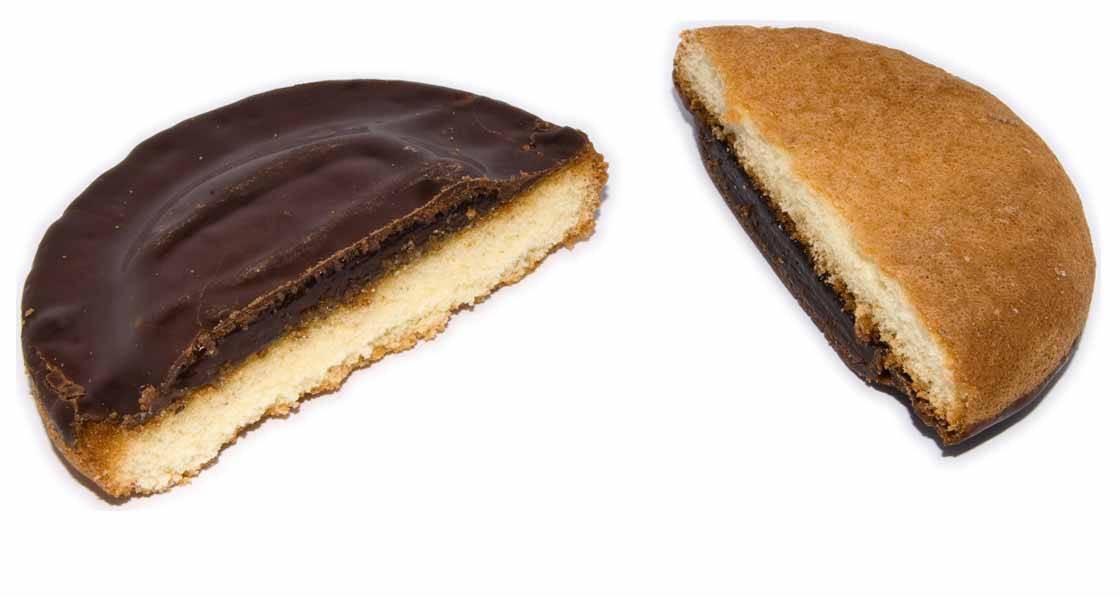
- Blogs
- Posted
Do your walls behave like a Jaffa Cake?
Toby Cambray writes on the many lessons that the inimitable biscuit cake can teach us about how building materials deal with moisture.
This article was originally published in issue 36 of Passive House Plus magazine. Want immediate access to all back issues and exclusive extra content? Click here to subscribe for as little as €10, or click here to receive the next issue free of charge
The topic of VAT on retrofit is (for our UK readership) a point of significant concern, the disparity making it disproportionately costly to refurbish than to build new, setting up undesirable incentives (to knock down and re-build, with all the additional up-front carbon) and arbitrarily and unfairly penalising one type of building work over another. If you have not done so already, I would urge you to sign the petition to correct this injustice, initiated by the inimitable Harry Paticas, and available at tinyurl.com/vatretrofit.
But there is another burning injustice in the realm of VAT of even greater interest to building physicists. Back in 1991, Her Majesty’s Revenue and Customs embarked on a campaign to impose VAT on McVitie’s Jaffa Cakes. Somewhat counterintuitively, cakes are considered a staple and not subject to VAT whereas biscuits are a luxury and are burdened with VAT. HMRC claim to have simply wanted the additional revenue, but the campaign was pursued with such fervour I am convinced it was driven by a Jaffa-hating faction within the department.
The case went to court, and arguments were advanced pertaining to the size of the snack, placement in relation to biscuits within shops, the presence of partial chocolate covering and the use (or not) of a fork to facilitate consumption. McVitie’s apparently went so far as to bake a giant version to illustrate the inherent cakeyness of the Jaffa.
However, one indisputable fact helped to turn the case: when left out to go stale, biscuits go soft, but cakes go hard. Reading about this improbable case recently, it occurred to me that it is an elegant example of hygroscopicity as one could hope for – an important property in the field of moisture in buildings.
Hygro (as distinct from hydro) pertains to humidity; the etymology suggests the ‘scopic’ portion of the word is vestigial, deriving from the instrument used to measure or look at the property. Logically enough, this instrument was originally termed a hygroscope, now usually called a hygrometer.
Conversely, biscuits are best enjoyed in a relatively dry state which creates the subtle crunch of the classic digestive.
Hygroscopicity is the relationship between the moisture content of a material and the humidity of the environment surrounding it and within its pores. It tells us about the ability of a material to take up and release moisture to the air, and its ability to store or hold moisture. Hygroscopicity is not therefore a binary property; it’s not very accurate to say material ‘A’ is hygroscopic and material ‘B’ is not.
Not even is it sufficient to express hygroscopicity as a single parameter in the way that we (to a first-order of accuracy) give say density and conductivity. Hygroscopicity is fully represented as a curve showing, for a particular material, the water content at equilibrium at a certain relative humidity. In the case of cakes, they are most enjoyable when somewhat moist; their moisture content at the optimal point of taste corresponds to a higher humidity than typical indoor air. If left exposed, the moisture in the cake will evaporate into the air until it is at equilibrium, leaving a lower moisture content and a disappointingly stale cake.
Conversely, biscuits are best enjoyed in a relatively dry state which creates the subtle crunch of the classic digestive. This moisture content corresponds to a relative humidity significantly below typical ambient, so when left out they take up moisture as they tend towards equilibrium. In Ireland, Jaffa Cakes are classified as a cake by Revenue because their moisture content is greater than 12 per cent.
At the risk of irritating the more adventurous bakers reading this, cakes and biscuits are generally made from the same basic ingredients – flour, fat, and sugar. An important difference with biscuits is the higher proportion of sugar, which increases the hygroscopicity.
From all this we can also understand what happens to those foolish enough to store cakes and biscuits in the same tin; essentially the moisture in the cakes migrates to the biscuits, ruining both. Hypothetically, a single small biscuit in a tin with a large cake would not draw sufficient moisture out of the cake to render it entirely unpalatable, while the biscuit itself would degenerate into a limp shadow of its former self. This is because the amount of moisture a ginger nut takes up, even at elevated relative humidity, is in absolute terms small in comparison the moisture in a densely fruited, brandy- infused, bumper-sized Christmas cake for example. Conversely, a lonely and most petite fairy cake would not severely impact the shortness of a generous stash of Dean’s, despite succumbing to a brittle fate itself.
It’s fascinating to explore the parallels between what we do in the construction industry and how others approach seemingly unrelated problems and phenomena in different walks of life. The world of food science has much more to teach us about buildings; I am looking forward to tucking into a veritable feast in subsequent columns.



